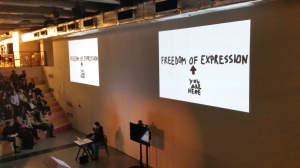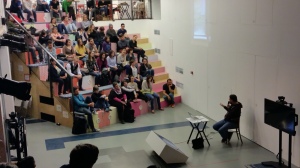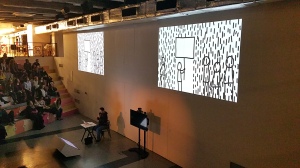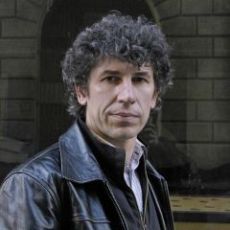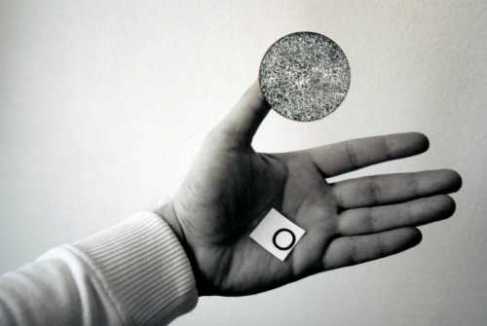 on the Occasion of his Solo Show at Trapéz Gallery Budapest 27 March till 30 April 2013 about poster art, poetry and working with distance.
on the Occasion of his Solo Show at Trapéz Gallery Budapest 27 March till 30 April 2013 about poster art, poetry and working with distance.
working from Zagreb
I come from Zagreb and to live there and work elsewhere is a challenging situation, as it means living with distance in all directions. I don’t really feel part of the Zagreb scene, but the advantage of living there is that I also maintain a distance from all the more hectic aspects of working in the international scene.
experience of studying at Zagreb Academy
I studied in a very traditional art school. After I finished the Academy I realised I had no knowledge about contemporary art, for example I only found out about private galleries and their role in representing an artist after I left the Academy. Taking part in artist residencies enabled me to actually find out how different art scenes work.
relation to the idea of East European art
The contamination of East European discourse is very typical of ‘small loops’ – in every city there is a local scene which is a small loop – but Zagreb has no loop of international artists. WHW has a narrow and small space, and the Museum of Contemporary Art is beyond words… though the potential is there.
I always had my own agenda and interest in any discourse from my environment faded very early. I am always thinking for example that an artist born in 1984**, relating to communism becomes a cliché, just as there are certain expectations about what artists from the Middle East should be relating to. In a way you limit people to their given political mindsets and a geopolitical way of thinking. I try to bypass this as much as possible.
art, politics and poetry
I think my work is very political. I never think in grand terms, the work I’m doing now expands across a lot of different ideas that we have to put in one pot, to look for common ground in various aspects, I’m interested in using poetry as a political language.
I think music is very challenging, I’m interested in the history of music, discourse of contemporary music, but I’m not interested in making concerts or writing poetry to be published as such, but using all the tools available to make my work. I lean towards time-based media, but for me music, poetry and film are much the same.
autonomy of art and social comment
My social comment is not a very loud comment, I don’t have this ‘poster mindset’. I work with emotions, which is a way to move people from the inside, it has a core.
dynamics between two different worlds
There is a big cliché about what political art looks like, which always looks the same, but poetry is the most political thing there is, since it is at the same time the most vague and aesthetic language and also the most political.
working with Yvon Lambert
With Yvon Lambert it was like a love story. He has been in the art world since 1966, he really loves art. When they wanted to work with me they took a lot of risk, and they really saw the point in representing me and supporting my work. It all happened after my show at Palais de Tokyo. Afterwards I ran back to Zagreb, where there’s more distance, you don’t need to be at the centre of attention all the time. The thing about having a gallerist is they manage a lot, such as my Italian gallerist, who put together a big archive of my things and sketches.
showing in Budapest
It’s a strange period for me, I’m working with a format that doesn’t include a film, but rather making scores and working through collage and drawing. I’m using a wide scale of images, which I turn into complete abstraction. There are three sets of images, one involving a hand, another images of a corner of my empty studio, while the third is images from Sao Paolo, overburdened, at the same time I was interested in connotations of calm and silence. Social work is not very present, it’s more discreet, doesn’t always appear to you. I imagined a V shape, as the sound will come from the centre of the structure, while outside there is a different space. This is the second exhibition without a film in my recent professional life!
working in English
I write my works and my art in English, but with poetry it’s more challenging, at the same time to write in Croatian is almost impossible, as there is no challenge similar to the one writing in english. You have to find the right angle for each word in a delicate and precise process, while with Croatian everything is very familiar from the beginning and sometimes words just come together too intuitively.
Interview with Maja and Reuben Fowkes in Budapest on 25 March 2013.

